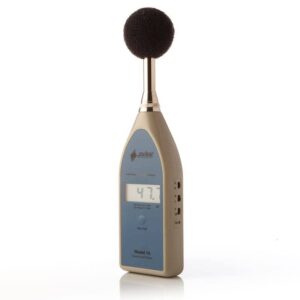Classroom Noise Products from Pulsar Instruments
-

7-year
Warranty
SafeEar Noise-activated Warning Sign – Shhh Quiet ZoneFrom: £342.00 (Ex. VAT/GST) -

7-year
Warranty
Nova Noise at Work Sound Level MeterFrom: £1,605.00 (Ex. VAT/GST) -

Last Chance
To Buy
Digital Noise Meter for Noise Level TestingFrom: Original price was: £315.00.£283.50Current price is: £283.50. (Ex. VAT/GST)
How to control classroom noise in schools, colleges and universities
Access to education is one of the most important opportunities in our lives, however, there is increasing evidence that excessive noise levels can create a negative learning environment. Young students have a right to quiet zones for study, teaching and examinations however classroom noise in schools, colleges and universities is on the rise.
In recent studies[1] daily noise exposure for young people in schools in the UK averaged 72dB(A); classroom conversation alone frequently takes noise levels above the 35dB(A) WHO recommended level for background noise during teaching sessions and above the 55dB(A) recommended maximums for background playground noise.
This excessive noise can be detrimental to students’ performance as high levels of background noise interfere with hearing and concentration in the classroom.
These high noise levels can also be detrimental to teachers hearing where hearing loss and tinnitus are common, for instance, a recent Swedish study[2] found that seven out of 10 female preschool teachers suffer from sound-induced auditory fatigue, one out of two has difficulty following speech, and four out of ten had become hypersensitive to sound.
The noise outside the classroom is also an issue. For example, excessive noise in corridors during exam time will be a distraction to those undertaking examinations, or it can cause interruptions to normal classroom teaching.
Of course, it is not just noise generated by students that is of concern in teaching environments. Power tools and machinery used in teaching, for example in metal or wood-working workshops, noise in music rooms, and the noise from building services, maintenance and grounds-keeping are also of concern because of the potential impact of noise-induced hearing loss.
It is not just students that are affected; the Noise at Work Regulations govern the legal limits for exposure to workers from occupational noise, so all employees involved in activities that exceed the noise action levels must be protected.
Key noise level problems:
- Noise from other students can be a distraction from studies in classrooms.
- Noise in corridors during exams or in other quiet zones breaks concentration and affects learning.
- Noise in classrooms leads to increased stress and the teacher having to raise their voice louder. It also leads to a negative feedback loop of noise; to hear what’s being said young people have to talk louder and louder. This could in the long term affect students and teachers hearing.
- Noise at work impacts on students from machinery or power tools in college workshops or on employees from maintenance and grounds keeping works.
- Exposure to noise in school music facilities where music teachers and students can be exposed to high occupational noise levels above legal limits.
- Poor classroom acoustics: lots of hard and reflective surfaces bounce noise around.
Solutions for noise in schools, colleges and universities
So, how do you control noise in schools? There are several options. You can use noise level meters such as the Pulsar Model 14 to do quick spot checks on noise levels or use the Pulsar Nova to determine and report on the noise levels in classrooms and workshops. If noise levels exceed recommended levels then a noise action plan should be produced.
You can create quiet zones in classrooms, corridors, exam rooms and libraries using the Pulsar SafeEar – a noise-activated warning sign that lights up to tell people when a pre-set level of noise has been exceeded and noise levels need to be reduced. The Pulsar SafeEar noise warning signs only illuminate when noise levels are exceeded so they are perfect for areas with varying noise levels.
[1] Studies conducted by Southbank University and Institute for Education.
[2] Hearing-related symptoms among women – Occurrence and risk in relation to occupational noise and stressful working conditions, Sahlgrenska Academy, University of Gothenburg, June 25 2018. http://hdl.handle.net/2077/55969